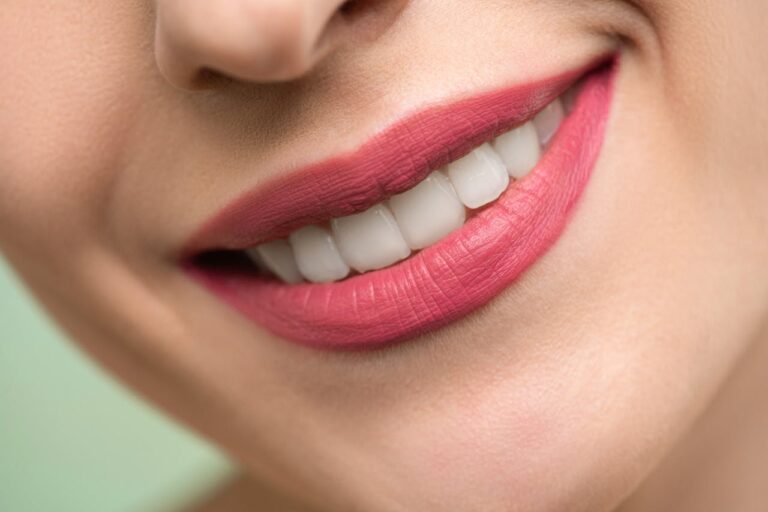Do you feel you have more gums than teeth? Having a gummy smile can keep you from smiling as often and as widely as you’d like. Although this doesn’t always indicate an oral disease, you can still make improvements if you want to.
Discover all you need to know about excess gum tissue in this post, including its causes and possible treatments.
Symptoms of Excess Gum Tissue in the Presence of Disease
Excess gum tissue can happen due to infection. In this case, you’ll notice the symptoms below.
Swollen and Puffy Gums
Most of the time, swollen and puffy gums are the most prominent symptom, often affecting or completely covering several teeth. Excess gum tissue may make gums seem larger and bulkier than usual.
Redness and Tenderness
The overgrown tissue may appear red and inflamed, causing discomfort or pain, especially when you touch it.
Bleeding Gums
Brushing or flossing might trigger bleeding due to the inflamed and fragile gum tissue. This can be a sign of underlying inflammation or infection.
Difficulty Brushing and Flossing
The overgrown tissue can physically prevent proper oral hygiene practices, making cleaning your teeth difficult.
This is usually due to plaque/tartar build-up above and below the gums.
Bad Breath
Poor oral hygiene due to overgrown gums can contribute to persistent bad breath, also known as halitosis.
Loose Teeth
In the presence of gum disease or periodontal disease, teeth become loose or mobile.
General Causes of Overgrown Gum Tissue
Generally, excess gum tissue happens for the following two broad reasons:
- Natural appearance: You can have the appearance of excess tissue upon smiling — known as a “gummy smile”. While there’s nothing unhealthy about this, you may not like the appearance.
- Gum disease: Gum disease can cause excess or swollen gums. This is because of infection.
Here are other detailed reasons that may cause excess gums.
Poor Oral Hygiene
Plaque and tartar buildup due to inadequate brushing and flossing can irritate your gums, leading to inflammation and overgrowth.
Certain Medications
Medications like anticonvulsants, immunosuppressants, and calcium channel blockers can have gum overgrowth as a side effect.
Hormonal Changes
Pregnancy, puberty, and menstruation can cause temporary gum swelling due to hormonal fluctuations.
Genetics
Excess gum tissue can be inherited, making you genetically predisposed to developing gum overgrowth.
Medical Conditions
Certain medical conditions like leukemia can also cause gum overgrowth.
Treatment Options for Excessive Gum Tissue
Whether your excess gum tissue is natural or a result of gum disease, one of the following treatment options will help.
Gum Contouring Surgery
Gum contouring, also known as gum reshaping, is a dental procedure that sculpts your gum line. This surgery is done by a dentist, usually a periodontist (gum specialist) and addresses two main excess gum tissue concerns:
Gummy smile: If you have a lot of gum tissue showing when you grin, revealing short teeth, gum contouring can remove the excess.
Uneven gum line: If your gums are higher on some teeth than others. Gum contouring can even things out for a more balanced look.
The procedure itself is typically done in-office with local anesthesia to numb the area. The dentist will use lasers or scalpels to remove or reshape the gum tissue. Stitches might be used to hold everything in place while it heals.
Gum contouring is mainly cosmetic, but it can sometimes be combined with other treatments for gum disease. Recovery usually takes a week or two, and you’ll need to practice good oral hygiene to ensure proper healing.
Scaling and Root Planing
Scaling and root planing is a deep cleaning procedure that your dentist or periodontist will perform to remove plaque and tartar buildup below the gum line. It helps correct excess gum tissue caused by inflammation and creates a healthy environment for gum tissue to heal.
Medication Adjustments
If certain medications contribute to gum overgrowth, your doctor may adjust the dosage or ask you to switch to a different medication.
This addresses the root cause and prevents further tissue growth.
Electrosurgery
This technique utilizes an electrical current to remove and reshape gum tissue precisely. It offers greater control and minimal bleeding compared to traditional scalpel surgery.
Flap Surgery/Osseous Surgery
In complex cases, flap surgery might be necessary. This involves lifting gum tissue to access deeper areas for cleaning or bone grafting procedures.
After treatment, your dentist repositions the gum tissue and stitches it back into place.
Which Treatment Is Right for You?
The most suitable treatment option depends on the seriousness of the condition, the underlying cause, and personal factors. Your dentist will thoroughly examine and recommend the most appropriate approach based on your needs.
How to Treat Excess Gum Tissue Using Home Remedies
Good Oral hygiene is imperative if your swollen gums are due to disease.
Salt Water Rinse
Salt water rinses can be great for healing gingivitis-inflamed gums. Also, salt acts as a natural disinfectant, aiding healing.
Visit Advanced Dental Arts for Excess Gum Tissue Concerns
Before deciding anything, consult with a dentist. It’s crucial to have them assess your needs and carefully weigh the benefits and risks of each treatment option.
We have highly qualified dentists at Advanced Dental Arts with experience treating excess gum tissue. We’re here to address any questions you may have.




